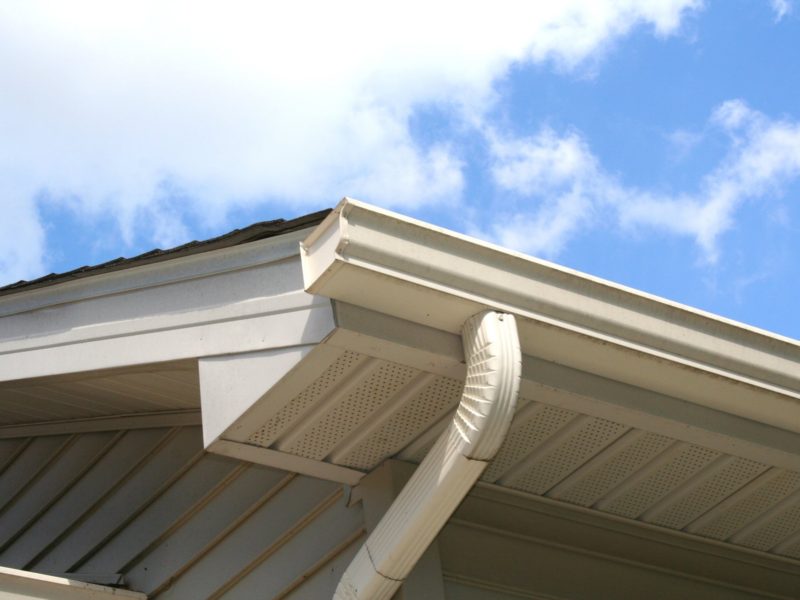
Things You Should Need to Consider About Gutter Installations
If your gutters are old and damaged and not working correctly, it’s time to install a new one before the next rain leaves the little pool in your basement. The big question with a home gutter system is installing it yourself or installs it by a professional company.
Having a gutter in your home is a good thing. Drains can prevent water damage to your plinth and landscape from heavy flow from the edges. But how do you choose the right one? Whether your home doesn’t have gutters or whether your existing channels need replacing, the tips here will make sure your money is well spent. Read this before calling your local line installer.
Table of Contents
Essential Things to Consider While Installing The Rain Gutters
It doesn’t look perfect, but gutters installation is an important thing to know along with your roof maintenance routine. Without properly functioning gutters, moisture can seep into the roofs of houses, and even walls and foundations can be affected by leaking rainwater from the trenches.
Right gutters divert storms straight from the sides and bottom of your house. Improper installation of gutters can damage your roof and, over time, lead to roof replacement. It is essential to supervise gutter maintenance throughout the year and install the gutter properly the first time.
Selecting the Right Gutter Size
Guttering isn’t rocket science, but it does require some basic engineering. One section along the lower edge of the canopy with corner pipes as quickly as possible.
Homes with multiple rooflines, multiple levels of slopes, and numerous gable roofs add complexity to a plan. The critical factor in developing this plan was scaling the system based on the area provided and considering high rainfall potential. Rainfall is based on meteorological data and varies by region.
Take Care Of Pitch Of rain Gutters
The angle at which the gutter hangs is an essential detail for a successful installation. Both too large a hook and a low angle can affect water flow velocity through the system. In this case, moderation is best. Experts recommend allowing an inch tilt into the gutter every 10 feet of the channel. The most important thing is that the track should not be flat.
Place Downapouts Carefully
How you gutter and how much you install is also essential. Lack of adequate gutters causes standing water and burdens the system during heavy rain. And if not appropriately placed, you can suffer area erosion, structural damage, and even insect infestation, which is expensive to remove.
Use Gutter Protection
The gutters have an open design, so they can quickly become clogged due to accumulated dirt. Then a blockage can damage your gutters, increasing the risk of water damage in your basement, landscape, and interior. The gutter protection system acts as a filter to prevent this. They block leaves, twigs, and other fragments from entering the system and keep the gutters clean and protected. You can choose from our three leading solutions: filter cover, filter, and backflow.
Install Carefully and Avoid Damage
The installation process must be precise, and you must be careful not to damage the gutter during installation. When installing aluminum gutters, there are unique risks that make them easy to bend or concave. Make sure that no one accidentally falls to the floor or hits the stairs. If it breaks, you will need to replace the whole part, and you want to avoid doing this as much as possible.
Don’t Put Gutter Hangers Too Far.
When installing gutters, the gutter hanger is how you install the gutter system in your home. Therefore, they must be appropriately placed. If you leave too much space in gutter hangers, the rain gutters will sag, and the water will stagnate instead of running through them. If this continues and you collect a lot of water in different parts of the sewer system, the extra pressure will separate the system from your home. The basic rule is to place a gutter hanger about three feet or so unless there is a lot of snow and ice where you live, then 2 feet is better. Keep in mind that while you may think that using fewer hangers can save you time and money, in the long run, any damage incurred will end up costing you more.
- Use High-Quality Materials
By converting it to do it yourself, you are already saving money on labor costs. So invest in a high-quality gutter system. If you choose a less expensive, low-quality material for installing your system, you can tell the difference. Why would you risk messing up and destroying your home to save a few bucks? A high-quality gutter system is a good investment and will last a long time.
- Follow The Safety Measures
Not everyone has to climb a roof to install gutters. If you have health problems or are afraid of heights, or are not in good shape, this is a challenging home project that you should not take part in. If you install yourself, make sure you have someone you work with who can see you as you climb and that the ladder remains stable and safe. Also, don’t lean too far when on stairs.
Conclusion
In addition to the gutter system itself, consider purchasing and installing commercial gutters guard, leaf catcher, or other product that will allow you to keep the gutter system as smooth as possible.





No Comment